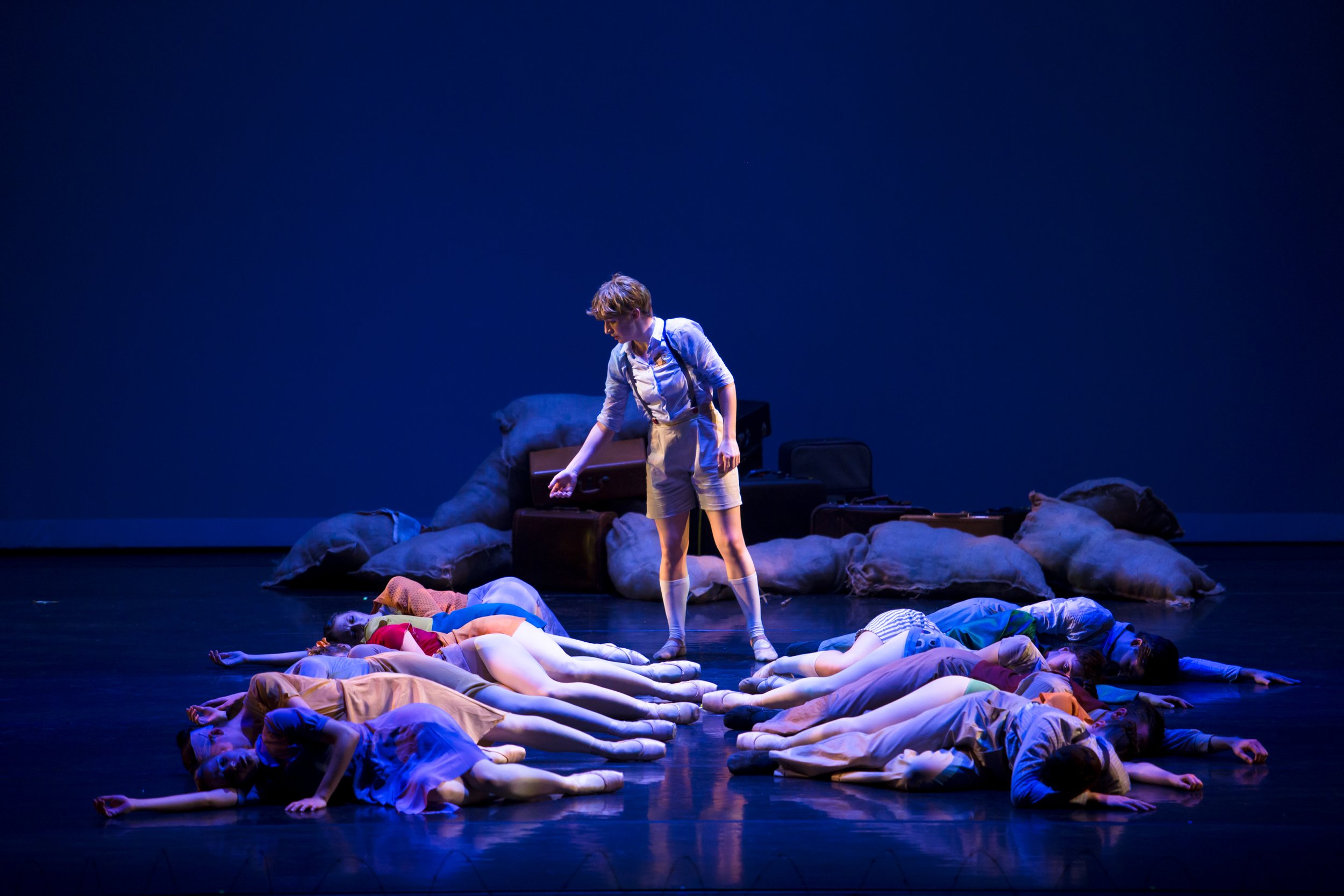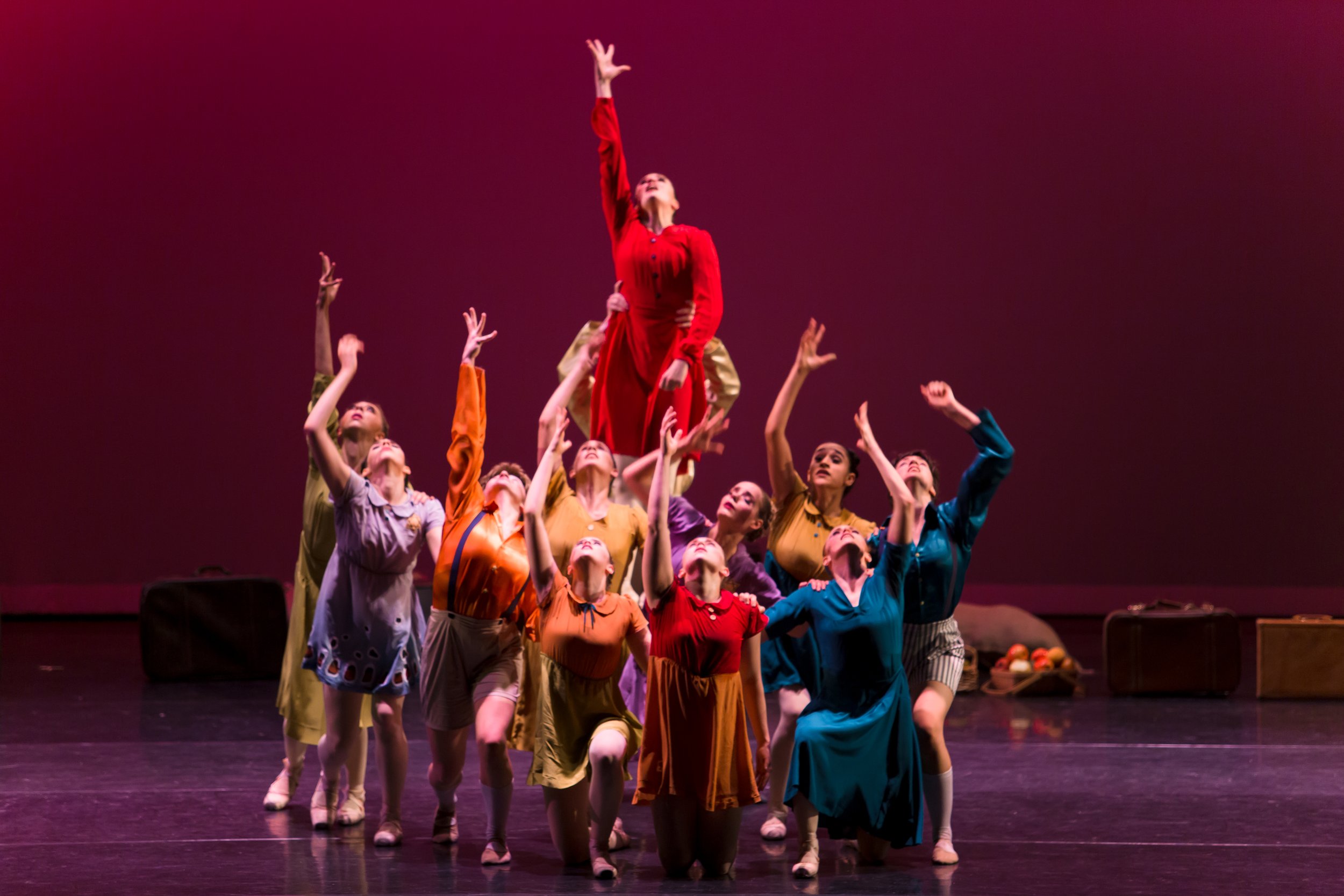

Butterfly, choreographed by Julianna Rubio Slager, is a ballet inspired by the true story of Helga Weiss, a young girl who was imprisoned at the Terezin (Theresienstadt) concentration camp during the Holocaust. Through her journal entries and artwork, Helga documented her harrowing experiences in the camp, capturing both the brutal realities of life in captivity and the small moments of hope she clung to. Her story, along with the voices of other children imprisoned at Terezin, forms the heart of Butterfly, which draws on these poignant reflections and artistic expressions to tell a story of resilience and the enduring power of the human spirit.
The ballet is framed around Helga’s perspective, bringing to life her journal entries and the artwork she and other children created. These children’s poems and drawings serve as a testament to their innocence and courage in the face of suffering. One particularly symbolic work, the poem "The Butterfly," stands out as an emblem of beauty and hope against a backdrop of darkness. This imagery becomes central to the ballet, with the butterfly symbolizing fleeting freedom and the resilience of the spirit.
In the larger historical context, Butterfly also echoes the true events of 1944, when the Danish Red Cross visited Terezin. The Nazis staged an elaborate deception for the visit, temporarily improving the camp’s conditions and showcasing cultural activities to portray Terezin as a “model ghetto.” During this time, Rafael Schächter, a Jewish conductor imprisoned in the camp, led his fellow inmates in clandestine rehearsals of Verdi’s Requiem. Schächter’s performance was a powerful act of defiance and solidarity, a hidden protest in the face of oppression, symbolizing a shared yearning for justice and redemption.
Slager’s choreography honors Helga’s story and the legacy of Terezin’s children, blending classical ballet with contemporary movement to capture the innocence, resilience, and hope of the young prisoners. Through dance, Butterfly reminds audiences of the importance of memory, empathy, and the enduring strength of the human spirit, using Helga’s voice and the symbolism of the butterfly as a powerful tribute to those who suffered and to the necessity of bearing witness to history’s darkest chapters.






